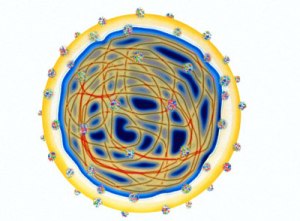About 300 million people worldwide are with Hepatitis C Virus (HCV) infection.
Its number is steadily increasing every year. It is been found that currently more than thirty thousand hepatitis C cases are diagnosing yearly.
According to the Centers for Disease Control and Prevention (CDC), approximately 3.9 million Americans are with Hepatitis C, mostly with chronic infections.
Hepatitis C, an infection of the liver caused by hepatitis C Virus, can develop as “acute” or “chronic.” Acute Hepatitis C causes short-term liver infection. In acute phase, the body can able to kill the Hepatitis C virus completely.
On the other hand, the stage where the body is unable to kill the virus and that leads to long-term inflammation of the liver is known as Chronic Hepatitis C.
Extra-Hepatic Manifestations Of Hepatitis C:
When Hepatitis C Virus (HCV) is left untreated, it can result in liver disease and even liver cancer. In addition to the liver, there are many other conditions associated with Hepatitis C, known as extra-hepatic manifestations.
Extra-hepatic manifestations refer to the diseases or health conditions that affect the organs other than liver. It usually occurs when the immune system is unable to fight off the virus.
People with chronic Hepatitis C are more susceptible to the development of extra-hepatic manifestations, which can be found in the kidneys, the skin, eyes, joints, immune system and the nervous system.
The most common conditions associated with Hepatitis C:
Cryoglobulinemia – It is the most common condition associated with Hepatitis C. It normally develops due to the presence of abnormal proteins in the blood called cryoglobulins.
These abnormal proteins originate from the stimulation of lymphocytes (white blood cells) by the Hepatitis C virus and can deposit in the small and medium-sized blood vessels.
Then they restrict the blood flow and leads to the infection of blood vessels (vasculitis) in the tissues of the body, including the skin, joints and kidneys (glomerulonephritis).
Canities : It is a health condition where the affected person experiences premature graying of the hair.
B-cell non-Hodgkin’s lymphoma – This is a cancer of the lymphoid tissues associated with the Hepatitis C virus.
It can be low-grade (slow growth) or high-grade (rapid growth). Its usually develops due to the excessive Hepatitis C virus stimulation of B-lymphocytes, leading to the abnormal growth of the lymphocytes.
Lichen planus – It is a skin condition associated with Hepatitis C Virus. This disorder usually appears as shiny, small-elevated bumps on flexor surfaces (arms, trunk, nails, genitals and scalp). The condition usually develops due to the reproduction of HCV in epithelial cells.
Diabetes mellitus – This is a very common metabolic disorder that is associated with Hepatitis C Virus. It usually develops when the body is unable to produce insulin, the hormone that controls the sugar levels in the blood.
This condition is strongly associated with advanced cirrhosis (liver fibrosis), which decreases hepatic uptake of glucose and hepatic clearance of insulin. Thus, results in high levels of insulin and insulin resistance syndrome.
The other conditions associated with Hepatitis C infection are Thyroid Disease, Kidney Disease (Membranoproliferative Glomerulonephritis), Peripheral Neuropathy, and Porphyria Cutanea Tarda (PCT).
It is to be noted that, normally, the extra-hepatic manifestations of Hepatitis C doesn’t develop. However, if you find any of these conditions, consult your health care professional for early diagnosis and treatment.





